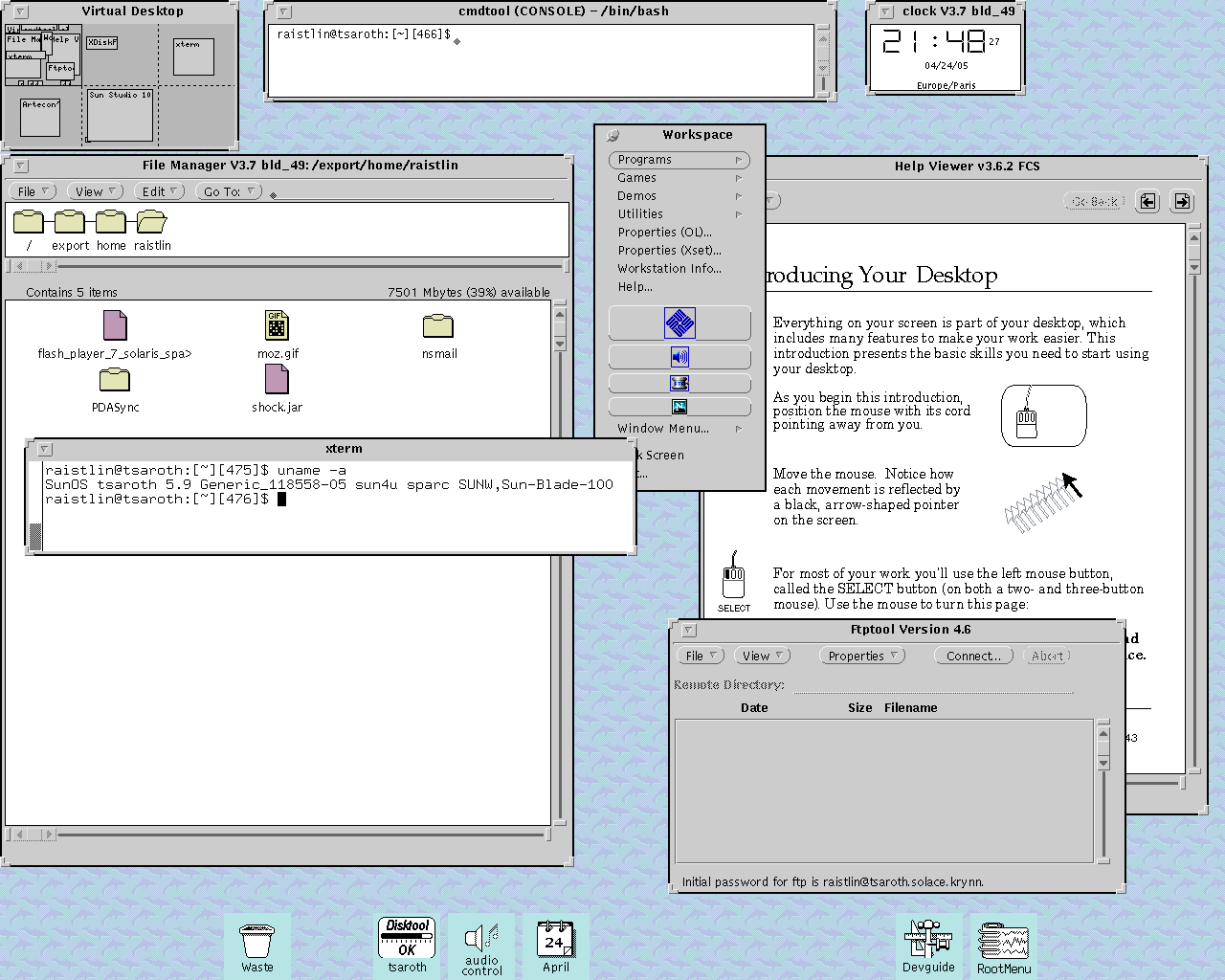Back in 1993 (or was it 94?), I was at university working on my thesis. I didn’t end up finishing it (my bad), but it involved writing some structural engineering software in C. Well, it actually involved expanding someone else’s previous work with some new functionality. It was difficult because I didn’t know C programming (or the Unix Make system) and the code was a spaghettified, uncommented mess. And just to make things more difficult, the program used an ugly GUI framework called Hoop (don’t ask me where it came from or where it went, because I don’t know.).
But there was an upside.
I got to work on the Sun Sparcstations. And besides the luxury of a relatively fast internet connection and relatively early access to the web, it also meant that I used OpenWindows. This is what it looked like:

It was miles ahead of the Windows 3.1 I was using on the PC back in my apartment. The screens were much higher resolution and things just seemed so crisp and futuristic. With its proper terminal, file system and virtual desktops, it was also foreshadowing my love for Linux.
But perhaps most importantly to me, I felt like I was a NASA engineer when I used it.
There is something to be said for the technical aspects of Linux. Yes, I know it’s great that it’s polished to the point where it’s so easy to install and easy to use (my Dad’s been running Linux on his laptop for probably 5 years now with no issues). But there is also that feeling of accomplishment while you’re using it. That you’re using something more purposeful, because perhaps (but likely not) you’re doing something more important than normal people are doing. So important that you might not even be taking the easy way to doing it. In fact there are times when you choose the harder way precisely because it’s harder.
Because sometimes it’s nice to feel like you’re a NASA engineer.